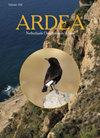Seasonal Shifts in Habitat Choice of Birds in the Sahel and the Importance of ‘Refuge Trees’ for Surviving the Dry Season
IF 1.3
4区 生物学
Q3 ORNITHOLOGY
引用次数: 9
Abstract
Every year, hundreds of millions of migratory birds cross the Sahara to spend the northern winter in the Sahel. After their arrival in September the region does not receive any rainfall until June while temperatures increase. Birds inhabiting the Sahel have several strategies to cope with this seasonal advent of drought. Most ground-foraging and arboreal migrants actually remain in the desiccating Sahel, although Northern Wheatear Oenanthe oenanthe remains in the arid zone only in a wet year, but moves from the arid to the semi-arid zone in a dry year. Some arboreal migrants stay for 1–2 months in the Sahel during the early dry season, but move on to the more humid zone further south for the rest of the northern winter. Common Redstart Phoenicurus phoenicurus is the only Sahelian arboreal migrant that moves southward in this period. Counter-intuitively, Curruca species move northward after the early dry season to the arid zone where they concentrate in woody plant species whose attractiveness increases later in the dry season. This is either because those plants then gain berries (Toothbrush Tree Salvadora persica) or because they develop flowers (six desert species). In the semi-arid zone, tree-dwelling bird species disappear from tree species when these lose their leaves. However, in tree species which do not shed their leaves, bird numbers remain either constant (those using Desert Date Balanites aegyptiaca) or increase (those using Winter Thorn Faidherbia albida, a tree that foliates during the dry season). On floodplains bird numbers in acacia trees increase during the dry season. As a consequence, birds become concentrated in fewer tree and shrub species during their stay in the Sahel. After wet rainy seasons, trees have more flowers and leaves and shed them later, giving the birds more foraging space. At the end of their stay in Africa after dry rainy seasons, the number of arboreal birds is only half that after wet rainy seasons, suggesting higher mortality in dry years. Clearly, in such years mortality would be even higher without what can be seen as ‘refuge trees’: the acacias on floodplains, and Faidherbia and to a lesser degree Balanites in the rest of the Sahel.萨赫勒地区鸟类栖息地选择的季节变化以及“避难树”对干旱季节生存的重要性
每年,数以百万计的候鸟穿越撒哈拉沙漠,在萨赫勒地区度过北方的冬天。在它们9月抵达之后,该地区直到6月才有降雨,气温也会上升。栖息在萨赫勒地区的鸟类有几种应对季节性干旱的策略。大多数地面觅食和树木迁徙动物实际上都留在了干燥的萨赫勒地区,尽管北方小麦小麦只在湿润的年份留在干旱地区,但在干旱的年份从干旱地区转移到半干旱地区。在旱季早期,一些树栖迁徙者会在萨赫勒地区停留1-2个月,但在北部冬季的剩余时间里,它们会转移到更南方潮湿的地区。普通红头鸟Phoenicurus是萨赫勒地区唯一在这一时期向南迁徙的树栖候鸟。与直觉相反的是,库鲁卡物种在旱季早期之后向北移动到干旱区,在那里它们集中在木本植物物种中,这些物种的吸引力在旱季后期增加。这要么是因为这些植物随后会长出浆果(牙刷树Salvadora persica),要么是因为它们会长出花朵(六种沙漠植物)。在半干旱区,当树木失去叶子时,树栖鸟类就会从树木中消失。然而,在不落叶的树种中,鸟类的数量要么保持不变(那些使用沙漠枣的),要么增加(那些使用冬刺的Faidherbia albida,一种在旱季长叶的树)。在洪泛区,干旱季节,金合欢树上的鸟类数量增加。因此,鸟类在萨赫勒停留期间集中在较少的树木和灌木物种上。雨季过后,树木会有更多的花和叶子,也会更晚脱落,这给了鸟类更多的觅食空间。在干旱雨季结束后,它们在非洲的停留时间结束时,树栖鸟类的数量只有雨季结束后的一半,这表明干旱年份的死亡率更高。显然,在这样的年份里,如果没有所谓的“避难树”,死亡率会更高:洪泛区上的金合欢,以及萨赫勒其他地区的Faidherbia和较小程度上的Balanites。
本文章由计算机程序翻译,如有差异,请以英文原文为准。
求助全文
约1分钟内获得全文
求助全文
来源期刊

Ardea
生物-鸟类学
CiteScore
2.10
自引率
0.00%
发文量
49
审稿时长
>12 weeks
期刊介绍:
Ardea is the scientific journal of the Netherlands Ornithologists'' Union, and is published since 1912. The journal welcomes manuscripts reporting significant new findings in ornithology, in particular those covering the ecology, life history, and evolution of birds, and including sound descriptive work. Ardea publishes Original research papers, Short notes and Book reviews. In addition to the regular three issues per year, Ardea publishes specials that contain conference or workshop proceedings (produced on request).
 求助内容:
求助内容: 应助结果提醒方式:
应助结果提醒方式:


